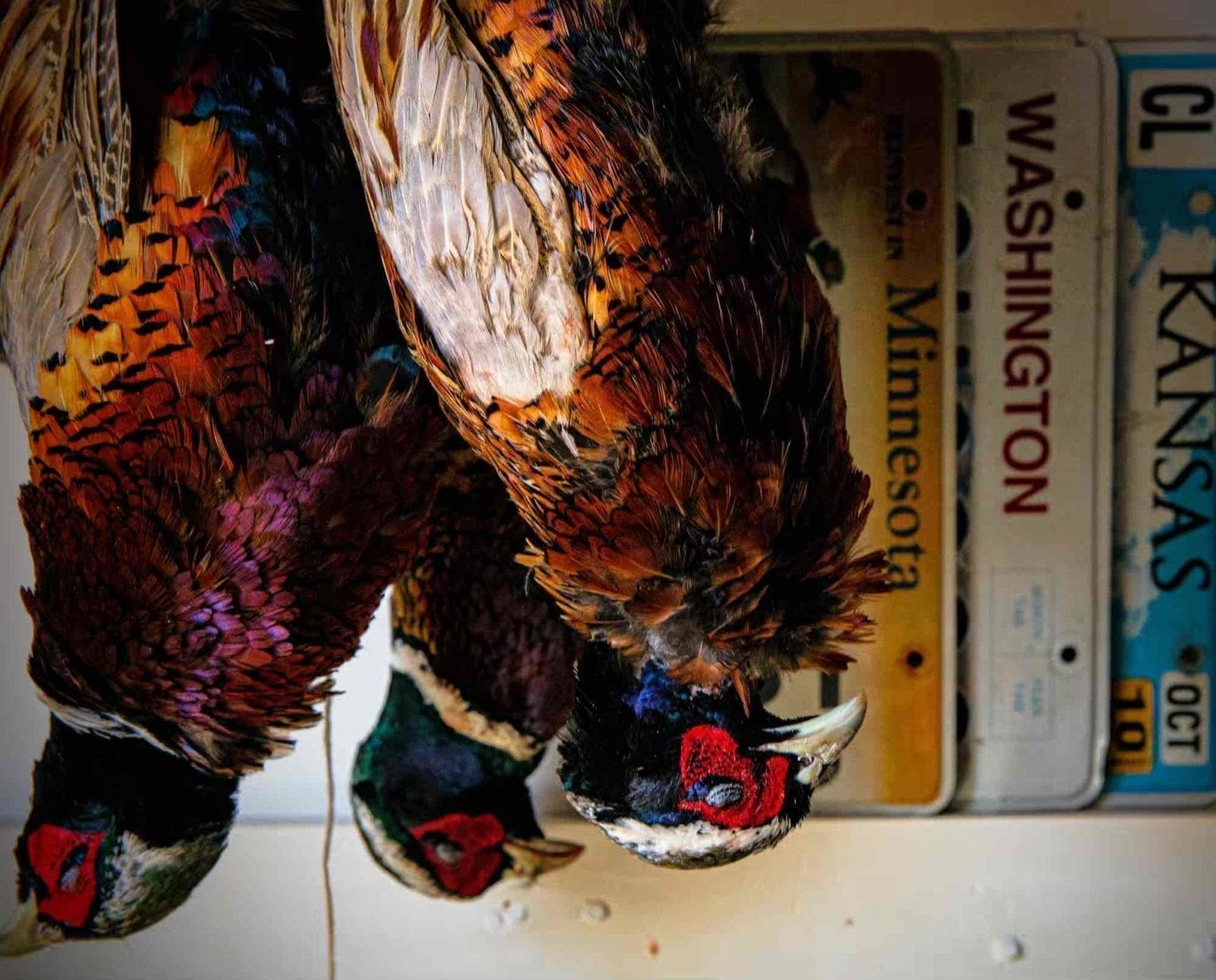Home » Small Game Cooking » How and Why You Should Age Your Upland Bird Meat
How and Why You Should Age Your Upland Bird Meat

Jack Hennessy grew up in the South Suburbs of Chicago…
Aging upland birds tenderizes the meat and concentrates the flavor, taking your wild game cooking to the next level
I first experimented with aging birds several years ago after reading a piece from Hank Shaw on the subject. Shaw goes into great detail regarding the science behind the method, but long story short: aging game—including big game—works via two methods. It allows the meat to rest and tenderize, countering the effects of rigor mortis, while also allowing moisture to evaporate, thus concentrating the flavor. When butchering an aged, raw bird, the first thing you’ll likely notice is that your knife cuts through the meat as if it were warm butter. Then the first bite, for someone who has never tasted an aged bird, is simply unforgettable.
While big game requires aging the meat in temperatures varying from 34-38 degrees Fahrenheit, you can safely age upland birds anywhere from 34-55 degrees, a fact that I initially found hard to accept as a professionally-trained line cook. For so long, it was drilled into my head that anything above 40 degrees was in the “danger zone” and at risk of growing bacteria. While it’s true that bacteria can grow above 40 degrees, it does so very slowly and, for your upland birds, it’s almost preferable to bring them close to the onset of decomposition for peak flavor.
I have aged pheasants, chukar, quail, and grouse in several states, all with varying temperatures during the hunting season. I own one fridge and usually don’t have extra room in it, so if I can’t hang birds outside in my storm shelter or garage, I don’t do it. What I found is that temperature and number of days hanging both matter a lot. I’ve hung pheasants from five days to upwards of eleven and noticed a major flavor difference. A ten-day-aged pheasant tastes considerably better than one aged for five days. Additionally, temps hovering around 45-50 are preferable to temps that drop near or 32 or below. This past season, I hung a rooster for nine days with temps in the teens at night. Upon eating, while the bird was super tender, it didn’t have the concentrated flavor for which I was hoping.
I neither pluck nor dress my upland birds prior to aging them. Leaving feathers attached prevents the bird’s skin from drying out while keeping innards intact, inside the bird, and further adds to the essence of flavor as natural enzymes and oils penetrate meat during the aging process. When aging larger birds like a turkey or goose, you would want to pull guts, as those birds are so large that the organs will remain warm for longer, potentially spoiling the bird.
While I have found that seven to ten days is preferable for roosters, smaller birds like chukar and grouse can achieve a similar effect after only six days. For quail and similar-size birds, three days should suffice.
General tips for aging upland birds
- If a bird is shot up badly, don’t bother trying to age it. Skin and butcher that bird right away; otherwise, bacteria will grow too easily.
- To age waterfowl, because of their thick feathers, you may wish to hang in a regulated fridge at 40 degrees.
- If ever in doubt, if the meat smells funny or appears greenish in color, I suggest throwing it out. It’s not worth the risk.
- Hang with kitchen twine from the feet or from the neck or nostrils—it makes no difference.
- Make sure there is adequate air flow around the bird.
- Allowing a bird to hang in temperatures that drop slightly below freezing is fine, especially if temps warm during day, but too far below freezing isn’t good because a frozen bird won’t age properly.
- Don’t allow a bird to hang in temperatures above 55 degrees.
- You can certainly pluck an aged bird but dry plucking is the only recommended method and you have to be extra careful because the skin can be gummy and tear easily.
- You are welcome to brine the bird, but save the pellet or charcoal grill with its additive flavors for another time. Keep it simple with a cast-iron sear in grapeseed oil, for example—allow that innate flavor to come out.
Enjoy! Reach out to me on Instagram (@WildGameJack) with any questions or comments and find my other wild game recipes here.
Jack Hennessy grew up in the South Suburbs of Chicago and didn't start hunting until he attended graduate school in Spokane, Washington, at the age of 26. Hennessy began work in professional kitchens in high school but didn't start writing wild game recipes until he joined the Spokesman-Review in 2014. Since then, his recipes have appeared with Petersen's Hunting, Backcountry Journal, Gun Dog Magazine, among many others. He now lives with his Wirehaired Vizsla, Dudley, in Wichita, Kansas.




Good article,This pass season I aged three gouse for 4 day’s and they tasted awesome.
I also age geese whole without gutting, but only if close to freezing temps the first night.
In general I find plucking an aged bird easier than a fresh one.